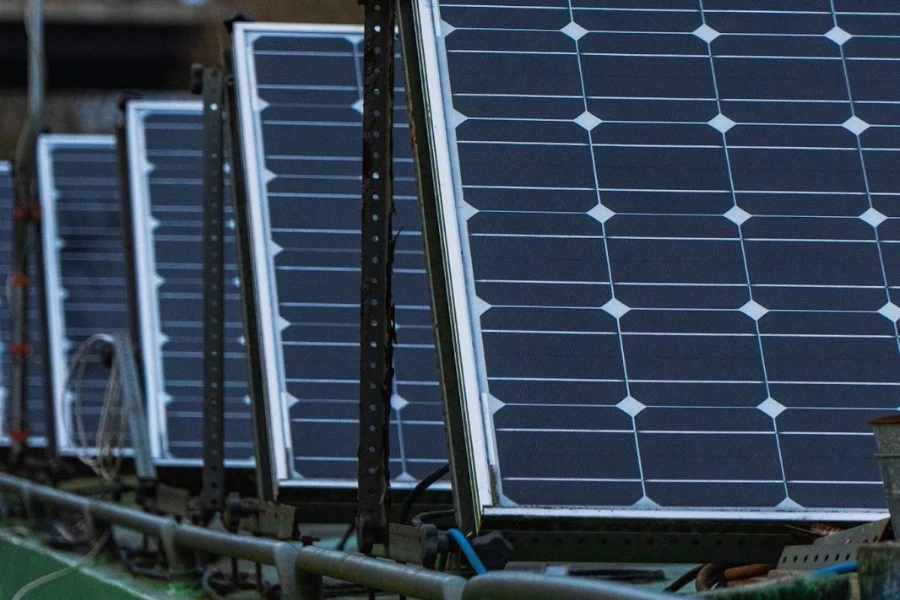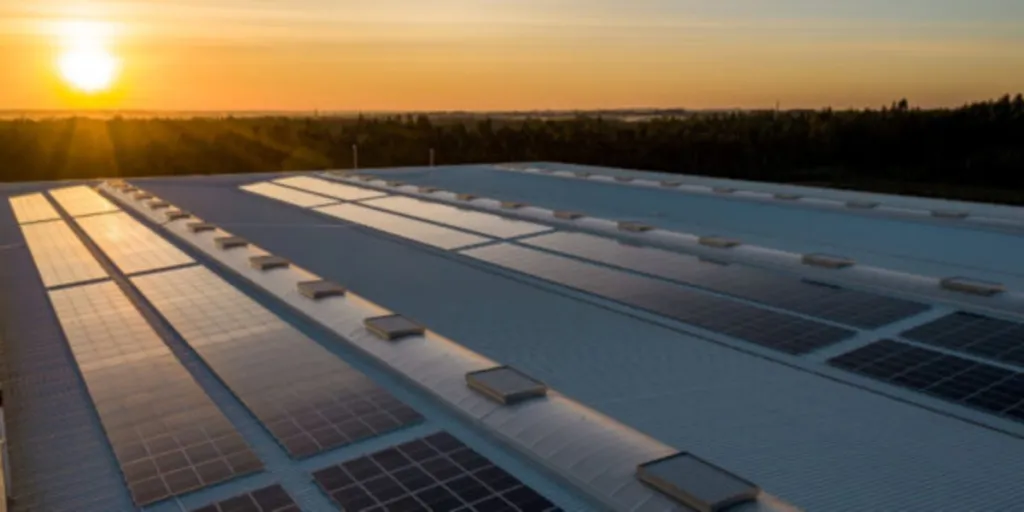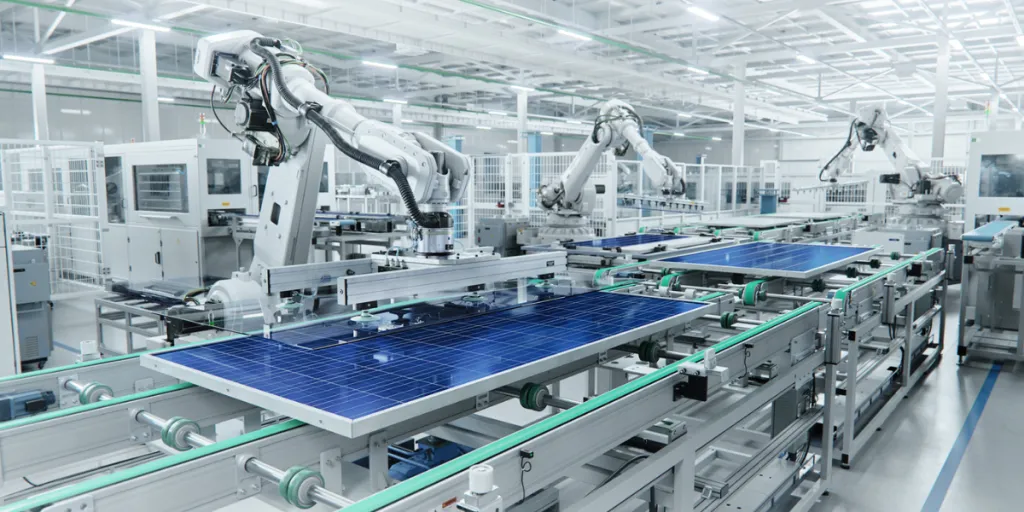Switching to renewable energy like solar power is crucial in the fight against climate change. However, while solar technology has made remarkable strides since its inception, it still needs new technologies to become a viable alternative to fossil fuels. In this scenario, perovskites, the latest invention in the renewable energy sector, could be a game-changer in the development of efficient solar power.
Traditional solar panels are made using crystalline silicon (c-Si) or thin-film solar technologies, which have limited efficiency. However, perovskites are lightweight and flexible crystalline structures that could easily be deposited onto any surface, flexible or textured. Thanks to this, they could lead to the creation of thinner and lighter solar panels, able to operate at room temperature and generate more electricity from the sun at a lower cost than silicon solar cells.
While no application of perovskites has been commercialized yet, they are a subject of ongoing research and investment. With many companies looking to harness their potential, now is a great time to learn about perovskite solar cells, their technology, and how they differ from traditional solar cells.
Table of Contents
What is a perovskite?
How are perovskite solar cells made?
The different types of perovskite solar cells
Perovskite solar cells vs. crystalline silicon solar cells
Conclusion
What is a perovskite?
Unlike crystalline silicon, perovskites are a family of materials with a unique crystal structure similar to the mineral of the same name that was first discovered in Russia in 1839. However, it wasn’t until 2006 that perovskites were first researched as absorbed materials, with the results of the research published three years later, in 2009.
Several varieties of perovskites exist. The first discovered perovskite was composed of calcium titanium oxide. Later, many perovskite types were discovered, including those containing methyl ammonium lead triiodide. Nonetheless, the perovskites most advantageous to the solar industry are those crystals made of organic and inorganic molecules connected to tin or lead atoms.
Perovskites are the most promising of the 3rd generation photovoltaic (PV) systems, making them a game-changer in the solar industry. In the past five years, the efficiency of a perovskite solar cell was found to have increased from less than 4% to over 20%. In the next 15 years, their efficiency is predicted to rise further to surpass 30%. For this reason, it is believed that perovskite solar cells will potentially replace traditional c-Si solar panels and most thin-film photovoltaics.
How are perovskite solar cells made?

In simple words, perovskite solar cells are created through a process called “wet chemistry,” where materials like methylammonium halide, methylammonium lead iodide, and other additives are mixed in a solution. This mixture can be applied on glass, metal oxide, silicon solar cells, flexible polymers, or even transparent wood.
The deposition of the perovskite solution on the base material is performed through spin-coating, which is based on the same concept as the Spin-Art machines used by children. The solution is either sprayed or dripped onto the substrate, with the substrate being spun at high speed, allowing for a thin layer of the solution to spread evenly across its surface. When the solvent in the mixture evaporates, a perovskite film is left behind as thin layers of perovskite crystals that can easily be wired into a solar cell.
However, there is more than just a single method for manufacturing perovskite solar cells, such as vapor assistance, two-step depositions, and thermal vapor deposition.
The different types of perovskite solar cells
On the whole, all solar cells have things in common. These include at least one negative layer, a positive layer of photovoltaic material, and a conductive front and back electrode. The electrodes carry the electrons charged by the sun from the negative layer along a wire to generate electricity before bringing them back to the positive layer. In addition, after being mounted in a solar module, all solar cells are sealed in an encapsulation layer to protect them from weather damage.
Now, when it comes to the different types of perovskite solar cells, two types are of high importance — thin-film cells and tandem cells. Thin-film cells contain only perovskites as the photovoltaic material, whereas tandem cells might have several layers of perovskite or a thin layer of perovskite atop a crystalline silicon layer.
There are also thin-film tandem cells. Here, the cells contain copper indium gallium selenide (CIGS) layers coated with a perovskite layer. Thin-film tandem cells are an already-perfect solar technology.
Perovskite solar cells vs. crystalline silicon solar cells

Crystalline silicon solar cells, considered matured technology with well-established mass production processes, have been the norm for decades in the solar industry. These have an AI-BSF structure where monocrystalline or polycrystalline c-Si is used in the absorber layer.
An interesting difference between perovskite and c-Si is their light absorption potential. Perovskite cells can respond to a wide range of colors in the solar spectrum, while c-Si can only absorb light of wavelength equal to or greater than 1,100 nm. This is due to the structure of perovskite cells, as it allows the electrons to penetrate through thick layers efficiently. As a result, they can convert a higher amount of sunlight into electricity, which contributes to the higher efficiency of perovskites.
The highest recorded efficiency of a perovskite solar cell is 29.15%, compared to the lower 25.4% exhibited by c-Si solar cells. Considering that crystalline silicon Al-BSF is a highly matured technology, this proves the promising potential of perovskite solar panels.
Finally, perovskite solar cells present low potential material and reduced processing costs. They can also be manufactured in various colors, allowing consumers to customize the product to their needs. Additional characteristics of perovskite solar cells, like flexibility, lightweight, and semi-transparency, have convinced researchers and electronic designers that the various applications of perovskite solar cells could replace c-Si technology in the long run.
When can people buy perovskite solar cells? A conclusion
Researchers and experts in the renewable energy industry see perovskites as a promising material for developing cheap, efficient, and environmentally friendly solar cells. As a result, a lot of businesses and organizations are currently researching the potential of perovskite solar cells, including the National Renewable Energy Laboratory (NREL), Oxford PV, Qcells, and others. While the cells they manufacture are postage-stamp-sized test cells, not yet ready for sale to the public, large-scale commercialization might not be far away.




